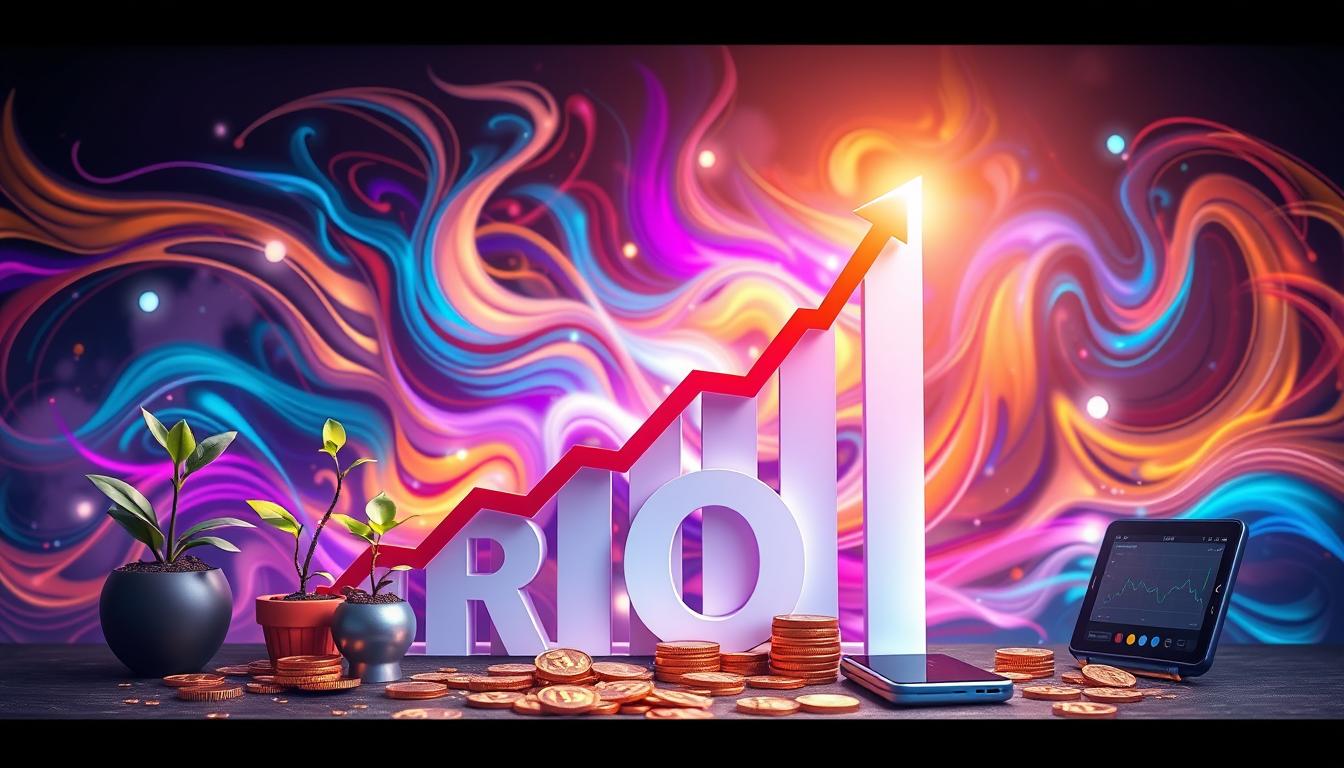Creating a sustainable business model is crucial in today’s world. Not only does it contribute to the well-being of our planet, but it also sets the foundation for long-term success. Sustainable business practices are not limited to large corporations; businesses of all sizes can adopt these strategies and make a positive impact on their surroundings.
A sustainable business model is one that generates value for all stakeholders without depleting resources. It goes beyond traditional profit-centric approaches and takes into account the social and environmental impacts of a business. Customers are increasingly drawn to companies that prioritize sustainability, making it an essential aspect of business sustainability in the modern era.
In this article, we will discuss the essential elements of a sustainable business model, its importance, and how businesses can start and maintain such models. Embracing sustainability not only benefits the environment and future generations but also helps in building a reputable brand and attracting loyal customers.
Key Takeaways:
- Building a sustainable business model is vital for long-term success and the well-being of the planet.
- Sustainable business practices can be adopted by businesses of all sizes.
- A sustainable business model focuses on generating value for all stakeholders while considering social and environmental impacts.
- Consumers prefer to support businesses that prioritize sustainability.
- Sustainability is an ongoing process that requires careful planning and a customer-centric approach.
What is a Sustainable Business Model?
A sustainable business model is an essential framework for companies looking to thrive in the modern business landscape. It goes beyond profit-making and focuses on generating value for all stakeholders while minimizing the depletion of resources. In today’s environmentally conscious world, an eco-friendly business model is crucial for sustainable business development.
To be sustainable, a business must prioritize the well-being of all stakeholders, including employees, customers, and the community at large. It involves assessing and addressing the environmental impact of operations, products, and services. Transparency in reporting ensures that businesses are held accountable for their sustainable practices.
“A sustainable business model aligns profitability with environmental and social responsibility, creating a harmonious balance for long-term success.”
In the pursuit of sustainable business development, it is essential to align the business model with the principles of sustainability. This involves integrating economic, social, and environmental factors to create a well-rounded approach that benefits the company and the world. By adopting and implementing an eco-friendly business model, organizations can contribute to a more sustainable future while creating value for their stakeholders.
Key Features of a Sustainable Business Model:
- Emphasis on long-term viability rather than short-term gains
- Minimization of resource consumption and waste generation
- Careful consideration of the environmental impact of operations
- Prioritization of stakeholder well-being and fair practices
- Transparent reporting and accountability
A sustainable business model is not just a trend; it is a necessity for businesses looking to thrive in a world where environmental and social responsibility are paramount. By embracing sustainable practices and incorporating them into their business models, companies can contribute to a greener and more socially equitable future.
| Benefits of a Sustainable Business Model | Challenges of Implementing a Sustainable Business Model |
|---|---|
|
|
What makes a sustainable business model work?
Building a sustainable business model requires careful consideration of key elements that contribute to its success. By incorporating these elements, businesses can create a foundation for long-term growth and positive impact.
Commercial Profitability
A sustainable business model should be commercially profitable, attracting customers and generating revenue. It is important to offer products or services that meet market demands while aligning with sustainable values. By providing value to customers and meeting their needs, businesses can achieve both financial success and sustainability.
Long-Term Success
A sustainable business model should be designed for long-term success, considering the potential impact of trends and resource availability in the future. This involves anticipating changes in customer preferences, technological advancements, and environmental considerations. By staying ahead of the curve, businesses can adapt and thrive in a rapidly evolving landscape.
Utilization of Sustainable Resources
Sustainability requires the utilization of sustainable resources, avoiding reliance on finite or environmentally harmful resources. By prioritizing renewable energy, eco-friendly materials, and responsible sourcing practices, businesses can minimize their environmental impact and contribute to a more sustainable future.
Adopting a Cyclical Model
A sustainable business model should embody a cyclical borrow-use-return approach, replenishing resources instead of depleting them. This involves implementing strategies such as recycling, waste reduction, and circular economy practices. By closing the loop in resource consumption, businesses can minimize waste and conserve valuable resources.
Investing in sustainable growth strategies and incorporating these key elements into a business model can drive success while positively impacting the environment and society.
| Key Elements | Description |
|---|---|
| Commercial Profitability | Attract customers and generate revenue to ensure financial success. |
| Long-Term Success | Consider future trends and resource availability for sustained growth. |
| Utilization of Sustainable Resources | Prioritize renewable energy, eco-friendly materials, and responsible sourcing. |
| Adopting a Cyclical Model | Replenish resources through recycling, waste reduction, and circular economy practices. |
What is a sustainable strategy?
A sustainable strategy is a comprehensive approach that considers the flow of resources, both tangible and intangible, required to create a product or service. It goes beyond financial goals and aligns with the purpose of the organization, aiming to address societal and environmental challenges. By identifying the problem the business solves and outlining how it will contribute to a better world, a sustainable strategy promotes responsible business practices and encourages positive impact.
A sustainable strategy involves setting clear goals, key performance indicators, and a timeline to measure progress and track the impact of sustainability initiatives. It requires transparency and engagement from the entire brand ecosystem, including the supply chain, local communities, and industry partners. By incorporating sustainability into the core of the business strategy, companies can create long-term value while actively contributing to the well-being of society and the planet.
“Sustainability is not just about doing the right thing; it’s about creating sustainable business solutions that allow companies to thrive in a rapidly changing world.” – Jane Thompson, CEO of GreenCo
An effective sustainable strategy requires an understanding of the interconnectedness of economic, social, and environmental factors. By focusing on sustainable business practices, companies can minimize negative impacts on the environment, reduce resource consumption, and contribute to the overall well-being of their stakeholders. This approach is not only beneficial for the planet but also enhances brand reputation, attracts environmentally conscious customers, and drives long-term business success.
The Benefits of a Sustainable Strategy
- Enhances brand reputation and customer loyalty
- Attracts environmentally conscious customers
- Drives innovation and fosters a culture of continuous improvement
- Reduces environmental impact and resource consumption
- Creates a positive social impact and contributes to the well-being of communities
Implementing a sustainable strategy not only makes good business sense but also aligns with the growing demand for sustainable products and services. Consumers are increasingly seeking out companies that prioritize sustainability and are willing to pay a premium for eco-friendly options. By integrating sustainable practices into their business models, companies can not only meet customer expectations but also contribute to a sustainable future for all.
Why do we need sustainable business models?
Kind businesses attract more customers, as evidenced by the growing consumer preference for sustainable products and packaging. Consumers are willing to pay more for sustainable options and base their purchasing decisions on a company’s sustainability credentials. Embracing sustainability as a selling point can enhance brand reputation and customer loyalty. Additionally, adopting sustainable business practices is essential for the long-term well-being of the planet and future generations.
As businesses strive to make a positive impact on society and the environment, sustainable business models play a crucial role in creating a more sustainable future. Sustainability is not just a buzzword but an essential aspect of responsible business practices. By integrating sustainable practices and strategies into their operations, businesses can benefit both financially and ethically.
“Sustainability is no longer just an option for businesses; it is a necessity. As we face global challenges like climate change and resource depletion, it is imperative for businesses to adopt sustainable practices to ensure a better future for all.”
The growth of sustainable business practices is driven by evolving consumer demands. Today’s consumers are more conscious about the impact of their choices. They prefer to support businesses that demonstrate a commitment to sustainability. By implementing sustainable practices, companies can attract a larger customer base and gain a competitive edge.
Moreover, sustainable business practices go beyond environmental concerns. They encompass social and economic dimensions, addressing issues such as fair labor practices, ethical sourcing, and community engagement. By actively contributing to the well-being of society and the planet, businesses can create shared value for both their stakeholders and the wider community.
Sustainable business models offer numerous benefits, including:
- Enhancing brand reputation and customer trust
- Increasing customer loyalty and retention
- Gaining a competitive advantage in the market
- Attracting socially and environmentally conscious investors
- Reducing operational costs through resource efficiency
- Driving innovation and fostering creativity
Consumer Preferences and Sustainable Practices
The growing demand for sustainable products and services reflects shifting consumer preferences. Studies consistently show that consumers are willing to pay a premium for sustainable and eco-friendly options. This increasing consumer awareness and demand for sustainability create an opportunity for businesses to align their practices with these preferences and achieve long-term success.
Businesses that prioritize sustainability are not only meeting customer expectations but are also contributing to global efforts to tackle pressing environmental and social issues. By embracing sustainable business models, companies can drive positive change, preserve natural resources, reduce greenhouse gas emissions, and promote social equality.
In summary, the adoption of sustainable business practices is crucial for the success and longevity of organizations in today’s rapidly changing world. By integrating sustainability into their strategies, businesses can meet consumer demands, improve brand reputation, and create a positive impact on the planet and future generations.
How can you start and maintain a sustainable business model?
Starting and maintaining a sustainable business model requires careful planning, conscious decision-making, and active engagement with customers and stakeholders. By implementing sustainable business planning and solutions, you can create a positive impact on the environment and society while driving business success.
1. Plan resource usage
One of the key aspects of sustainable business planning is to assess and plan resource usage. This includes identifying the raw material needs of your business and finding sustainable ways to source them. Whenever possible, prioritize local suppliers and manufacturers to reduce transportation-related emissions. Additionally, focus on reducing waste and implementing sustainable packaging practices, such as using recyclable or biodegradable materials.
2. Consider alternative forms of company ownership
Exploring alternative forms of company ownership can promote sustainability and create a sense of shared responsibility among employees. Consider options like employee ownership or cooperative models where workers have a stake in the business. These models encourage long-term thinking, employee engagement, and a greater commitment to sustainable practices throughout the organization.
3. Engage customers
Engaging customers through transparent communication and involving them in sustainability discussions is crucial for building a sustainable business. Educate your customers about your sustainable practices, eco-friendly products, and the positive impact they can make by choosing your business. Encourage feedback and actively listen to their suggestions and concerns. By involving customers in your sustainability journey, you can create brand advocates who will support your business and spread awareness about your sustainable initiatives.
“Sustainability is not just about implementing green practices; it’s about building long-term relationships with customers and stakeholders who share your values.” – Jane Miller, CEO of Eco Solutions Inc.
Embedding sustainable practices into the core of your business model is not only ethically responsible but also a smart strategy for long-term success. By planning resource usage, considering alternative ownership models, and actively engaging customers, you can create a sustainable business that makes a positive impact on the planet and drives financial growth.
| Sustainable Business Planning | Sustainable Business Solutions |
|---|---|
| Assess resource needs | Implement eco-friendly technologies |
| Source locally | Promote recycling and waste reduction |
| Reduce waste | Use renewable energy sources |
| Implement sustainable packaging | Invest in green infrastructure |
| Explore alternative ownership models | Engage employees in sustainability |
| Transparent communication | Educate customers on sustainable choices |
Tips for Building a Sustainable Business
Building a sustainable business requires a holistic approach and a focus on long-term success. Here are some tips from industry experts to help you develop sustainable growth strategies and foster sustainable business development:
- Remain focused yet flexible: Stay committed to your vision and mission while being open to adapting your strategies as needed.
- Put people first: Prioritize the well-being and development of your employees, customers, and other stakeholders. Engage them in your sustainability efforts.
- Constantly innovate: Embrace innovation and seek out new ways to improve your products, services, and processes with sustainability in mind.
- Invest in the team: Develop your employees’ skills and create a positive work environment that fosters collaboration, creativity, and a sense of purpose.
- Integrate and maintain strong core values: Align your business practices with sustainable values and ensure they are consistently upheld across all aspects of your operations.
- Practice patience: Building a sustainable business takes time and perseverance. Be patient and stay committed to your long-term goals.
- Communicate transparently with clients: Be open and honest with your clients about your sustainability initiatives, goals, and progress.
- Balance business needs: Find the right balance between economic growth, social responsibility, and environmental impact in your decision-making processes.
- Aim for continuous improvement: Regularly assess and refine your sustainability practices to ensure ongoing progress and effectiveness.
- Seek customer feedback: Listen to your customers’ opinions and suggestions regarding sustainability, and incorporate their feedback into your strategies.
- Create diversified revenue streams: Explore different sources of revenue to reduce dependence on single products or markets and increase resilience.
- Stay consistent in long-term strategy: Remain committed to your sustainable business goals and strategies, even as market conditions and trends evolve.
By following these tips, you can build a sustainable business that not only drives growth but also contributes positively to society and the environment.
Conclusion
Building a sustainable business model is a crucial aspect of long-term success in today’s business landscape. By implementing sustainable business practices and building a green business model, entrepreneurs can create a positive impact on the environment while also generating profits.
To achieve this, it is essential to start with careful planning and strategic decision-making. Defining a clear vision and mission, conducting thorough market research, and building a strong value proposition are crucial steps. Additionally, focusing on customer experience, developing a scalable business model, and building a strong team are vital for sustainable growth.
Embracing innovation, adaptability, and financial management, while cultivating strategic partnerships, help businesses stay agile and create a solid foundation for success. It is important to remember that sustainability is an ongoing process; entrepreneurs must remain customer-focused and continuously seek opportunities to improve their green business model.
FAQ
What is a sustainable business model?
A sustainable business model is one that generates value for all stakeholders without depleting resources. It prioritizes the well-being of all stakeholders, addresses environmental impacts, and is transparent in reporting.
What makes a sustainable business model work?
A sustainable business model works by being commercially profitable, designed for long-term success, utilizing sustainable resources, and adopting a cyclical borrow-use-return model.
What is a sustainable strategy?
A sustainable strategy takes into account the flow of resources required to create a product or service. It aligns with the organization’s purpose, identifies the problem it solves, and outlines how it will improve the world, environment, and society.
Why do we need sustainable business models?
Sustainable business models are essential for the long-term well-being of the planet and future generations. Consumers increasingly prefer to support businesses that prioritize sustainability.
How can you start and maintain a sustainable business model?
To start and maintain a sustainable business model, it is important to plan resource usage, consider alternative forms of company ownership, and engage customers through transparent communication.
What are some tips for building a sustainable business?
Some tips for building a sustainable business include remaining focused yet flexible, putting people first, constantly innovating, investing in the team, and practicing patience.
What is the importance of building a green business model?
Building a green business model is important for reducing environmental impacts, enhancing brand reputation, attracting customers, and ensuring the long-term success and sustainability of a business.
Source Links
- https://www.business.com/articles/how-to-create-a-sustainable-business-model/
- https://www.forbes.com/sites/forbesbusinesscouncil/2022/02/25/12-essential-strategies-for-building-a-sustainable-business/?sh=e01f48f7d5ed
- https://www.linkedin.com/pulse/essential-tips-entrepreneurs-building-sustainable-business-witten






